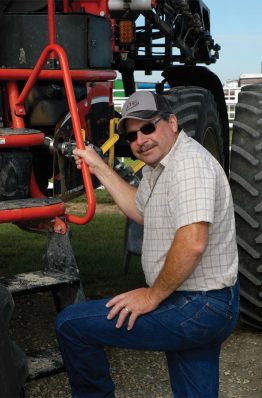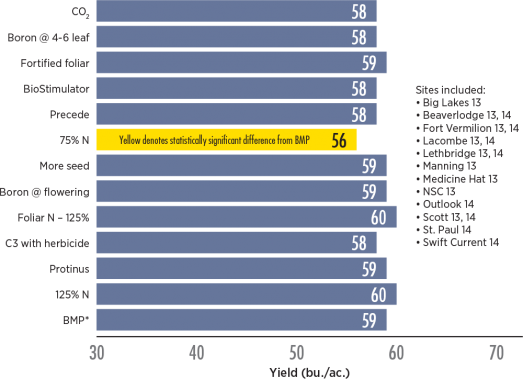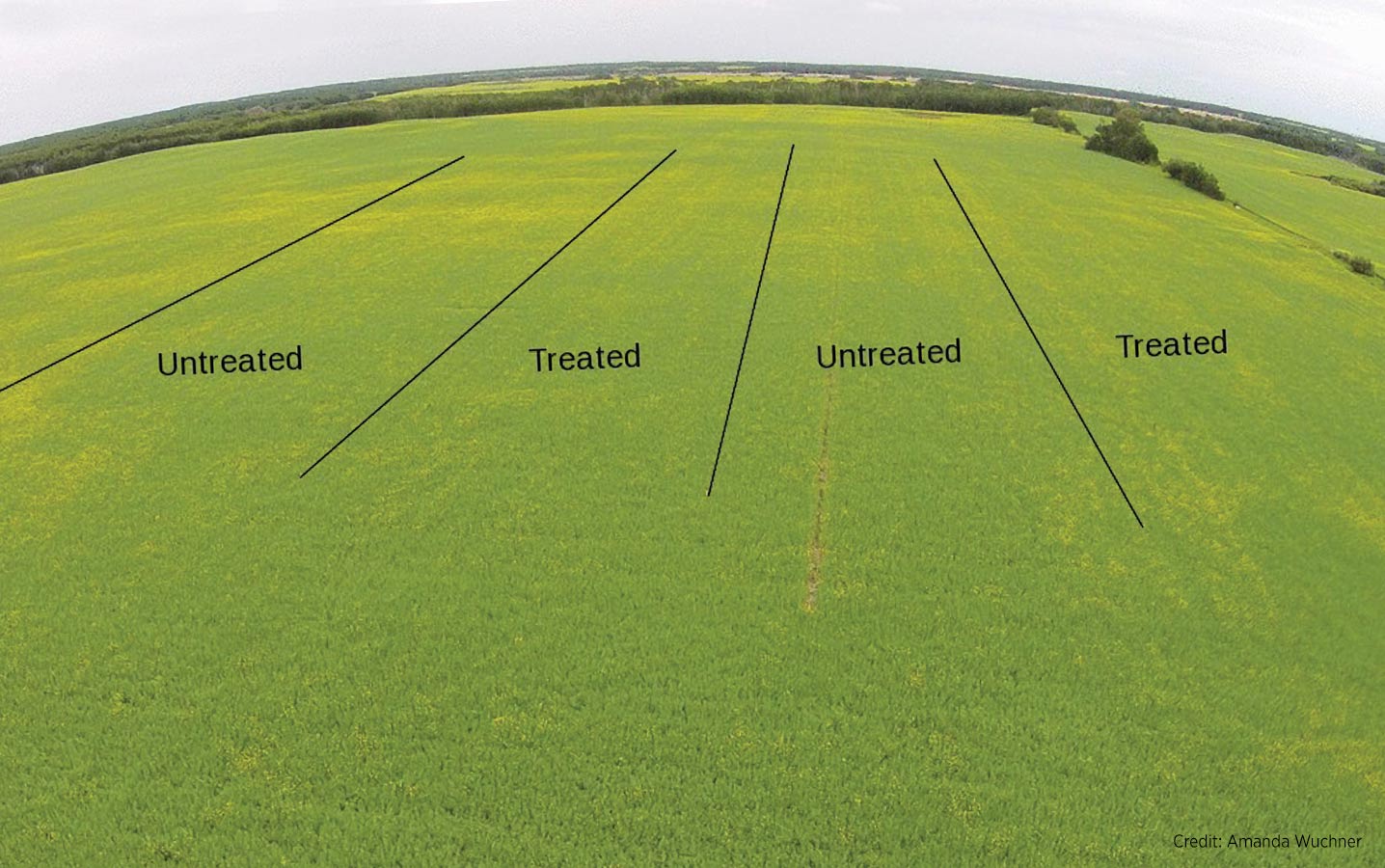Ultimate Canola Challenge tests new products
In an effort to reach the Canola Council of Canada’s (CCC’s) average yield goal of 52 bu./ac. by 2025, the Ultimate Canola Challenge (UCC) aims to test available products to see if they add benefit and profitability for canola farmers in Western Canada.
For the past three years, the UCC has used small plot research to test a range of products and practices available to producers, including different macro- and micronutrient rates, seeding rates and the use of additive canola products. Results from 2013 and 2014 are available on the Canola Research Hub.
The scope of the UCC was expanded in 2015. The intent is still to identify the best management strategies by testing various techniques and products beyond the CCC recommended best management practice. But in 2015 the UCC also looked for ways to help growers with on-farm research.
Every acre is a research acre
With changes in equipment and technology, more research is shifting to on-farm testing. The UCC has evolved to help growers conduct trials on their farms to see which practices work for them.
The goal of the field-scale UCC is to generate agronomic data on different products and practices at a scale applicable to canola growers, while also helping them discover the most effective way to carry out on-farm trials. These are useful skills now that fertilizer products no longer have to show a yield or agronomic benefit in order to be registered.
The first product tested for on-farm UCC demonstrations was boron. Canola needs boron, but research on its use in canola is limited. The experiments that have been done haven’t shown a consistent yield response. In order to understand when and where there is a consistent yield response with boron, CCC agronomists worked with Western Canadian farmers to implement on-farm trials.
Jay Anderson ran a UCC trial on his farm at Cluny, AB. “I believe we as producers should assist in researching and providing information to each other,” he says. “This may help us meet our goal of increased yield and more profit.”
What it takes to do a trial
Things you need to do an on-farm trial well:
- A question that needs to be answered
- Planning
- Ability to set up replicated trials
with a check strip - Commitment to see the trial through
The most important part of the on-farm trial is a check strip. A check strip ensures that differences in crop performance are due to the treatment differences and not due to naturally occurring spatial variation. The further the check strip is from the other treatments, the less confident you can be that differences in product performance are real.

All variables must be the same across the check strip and the treatment plot, except the treatment being tested. Things like variety, seeding rate and depth, seeding speed and pest control need to be consistent across the entire trial. The check strip should reflect best management practices for canola, and should not be on field edges or areas that are not typical of the field. Ensure the check strip is wider than the width of your swather.
Once you have your check strip, it is time to add your treatment. If using a product that can be tank mixed, such as boron, add it after all other products have been applied. For example, if applying a fungicide to the field, apply the fungicide first to the whole test area, then go back and add the test treatment in strips across the field.
The second most important part is replication. Don’t use just one strip. Replicating the check and test strips three or four times in the test area will help determine whether the difference between plots is due to chance or treatment performance. Chance variation is caused by differences in weather, soil and other factors. These factors change significantly from field to field and year to year. Replicating your check strip and treatment plot will give you much greater confidence in your results and final conclusions about the new practice. Also, replicating your trial over multiple years will give you an understanding of treatment performance year over year.

All treatments, though small numerical differences exist, produced essentially the same yield. The only exception is the yield for nitrogen at 75 percent of the recommended rate.
*Best management practices (BMPs), as outlined in the UCC protocols, include: Seed into cereal stubble, preferably two or more years since last canola crop. Use a different herbicide-tolerance system than the previous canola grown on field. Seed early to mid-May, if possible, after pre-seed herbicide. Aim for 100 live seeds per square metre. Soil sample and apply N, P, K and S according to soil test and consensus adjustments from CCC agronomists and Murray Hartman. Apply herbicides at the two- to three-leaf stage. Apply fungicide for sclerotinia at the appropriate stage, unless drought conditions. Spray for insect pests that exceed economic thresholds. Swathing is the preferred harvest method.
Mark the strips with GPS or flags. Make them wider than your swather or combine header so that, at harvest, full passes can be made through each strip. Careful harvest of the test strips is essential for a good comparison. Combine each strip separately and, ideally, weigh the results for each strip with a weigh wagon.
“Extra time definitely was needed to do the trial, but I’m not sure it was measurable or that it matters,” Anderson says. “Having these results for this field, this year, under these conditions was worth the effort.”
It all comes down to profitability
Once you have conducted your trial, run the economics to see if your treatment paid off. Economic significance occurs when the value of the average treatment effect is greater than the cost of the treatment. To evaluate a return on investment, one needs to know the average treatment response, cost, and expected crop price. Profitability margins can be calculated using these parameters. Keep in mind that profitability isn’t just about yield. Non-yield factors can improve profitability (such as quality improvements or differences in lodging that improve harvestability).
Get information about the Ultimate Canola Challenge and view 2015 trial results.





